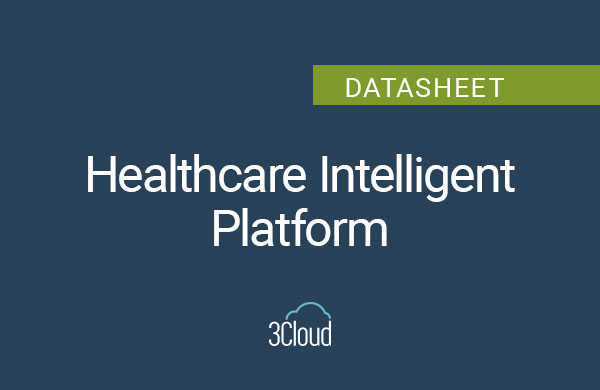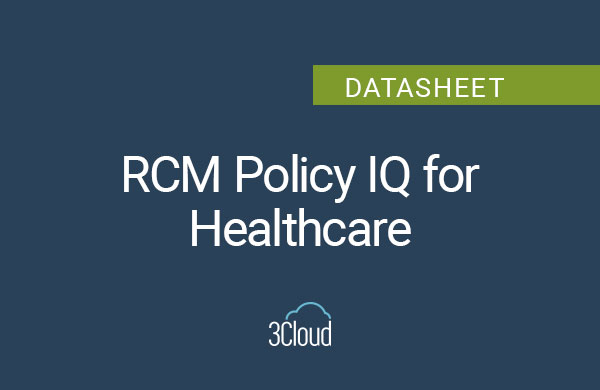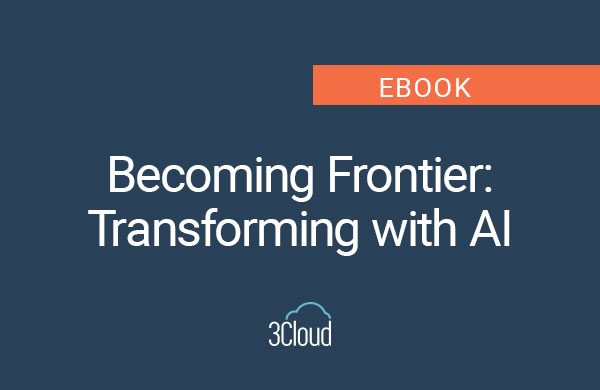Every organization wants to take advantage of AI. Some have their coordinates set, locked in on the tools and technologies they want to implement. Others are looking for help navigating the journey to an intelligent platform.
It’s reminiscent of the days before simply plugging a destination into your GPS. Some may remember receiving a printed TripTik from AAA. It wasn’t merely a roadmap outlining how to get from point A to point B. You worked with an AAA specialist to plan your adventure, receiving a personalized, printed guide that laid out everything from the roads to lodging, gas, and food.
What follows is a multi-part series from 3Cloud with our take on the TripTik for AI. For any business leader who’s wondered: How do we enable our strategic AI vision? Or, how do we layer use cases on top of an intelligent platform so that the whole business gets excited? Or even, how do we get business and the IT side of the house marching in the same direction? Then, you’re in the right place.
The following is an initial discussion with Greg Todd, senior vice president of Data & Analytics for 3Cloud, about laying the foundation for deploying AI within an organization. This conversation has been edited for length, continuity, and clarity.
(Follow along this series for more on how companies can build an AI campaign within their organizations.)
What do you see in terms of the AI landscape and AI demand from enterprises generally?
The AI landscape is still experiencing rapid growth. There’s still a nearly 37% annual growth rate projected from now to 2030, which is significant. A lot of companies have moved past the science project phase. They are moving more toward implementing production-hardened solutions, meaning they will become part of the core of the business. They’ll use AI tools to deliver business-driving insights that affect operating decisions around customer retention, cost optimization, and business efficiencies. But I’m most excited about the concept of AI centers of excellence or AI factories starting to take shape. It’s not only moving employees out of the mundane, which improves efficiencies and employee satisfaction, but also helps organizations start identifying AI use cases, building repetitive motions, and moving them through their ‘factory floor’ much faster.
What kind of advice would you give CIOs trying to get the right AI up and running at their company? What should they be doing now?
Start with governance. A business might ask questions like: How will we use AI? How are we going to police it? How are we going to ensure the trustworthiness of the tools? That part of the puzzle is always first. The second phase is determining the use cases, meaning the organization outlines the scenarios and intended benefits they want from their AI capabilities specific to their industry. So, take, for example, healthcare. Many of today’s healthcare organizations are targeting value-based care. There are plenty of use cases where AI and generative AI help to provide capabilities, whether it’s doing research, scheduling patients, predicting which patients will most likely miss appointments, minimizing human errors such as dosage miscalculations or unnecessary tests, and more. After governance and use cases, the next step moves into data availability. The question becomes, if I’m pulling content, where does it come from? Is it secure? Is it reliable? Can I then execute the AI-related activities to get the outcomes I need?
That’s a look into the tactical approach, but what about launching an internal campaign? If they haven’t already, how might a C-suite leader rally the company’s employees around AI?
KPMG just released a study showing AI will generate more hiring and productivity. That’s exciting because, to me, removing mental exhaustion from repetitive tasks only improves employee satisfaction, and growth opportunities improve workforce morale. They’ve got new tools to work with, and that energy is essential for companies to succeed. An example of this was when SpaceX achieved its first-ever ‘chopsticks’ landing. The entire SpaceX workforce watched the historic landing from the company’s headquarters, and they were so energetic about the company they were working for. Now, the thousands of hours that went into programming to make that happen and then actually watching it happen is incredible. Companies that can build that kind of momentum with their employees, even on a small scale, and capture that sentiment are important to building that engagement.
What is one thing that gets in the way of an organization realizing its potential with AI, and what do you suggest they do about it?
Business and IT alignment. It’s a consistent challenge. The new professional must have not only industry expertise but a common understanding of the technologies available to them to help achieve their organization’s business strategy. I am a huge fan of data literacy and constantly upskilling yourself with the latest insights. At the same time, organizations should reward and enable their teams to be hungry for knowledge and constantly look for ways to apply their employees’ newly honed skills. If you are not fostering a culture of individual growth, you will most likely have dissatisfied employees or a less-than-high-performing team.
On the other hand, studies have shown higher benefits in employee satisfaction and engagement levels if you prioritize continuous learning and skill development. Organizations that promote continuous learning are also better equipped to keep pace with rapid technological advancements and industry changes. This adaptability contributes to employee confidence and job security. It’s all cyclical because that strong learning culture then lends itself to enhancing a company’s reputation, making it more attractive to skilled professionals seeking opportunities for growth and development.




